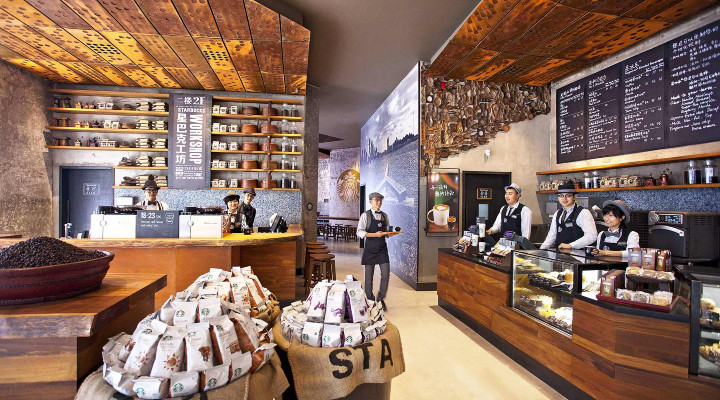Since launching in China over 20 years ago, Starbucks has built up a network of more than 6,000 stores. Now, it’s looking to reach 9,000 locations by 2025 through its focus on innovation, customer-centricity and agility. The coffee chain recently launched Starbucks Curbside, enabling customers to place their orders online and pick them up without having to get out of their cars. According to Judy Zhang, vice president of digital ventures at Starbucks China, the service is based on human-cent
n-centred design and provides a unique ‘Starbucks Experience’ for customers on the road.
“All customers have to do upon arrival at a designated pick-up point is to roll down their car window to pick up their orders, without having to step out of their cars, thus enjoying the convenience of a drive-thru, minus the wait,” she told Inside Retail.
Judy Zhang, vice president of digital ventures at Starbucks China
How it works
Starbucks Curbside leverages real-time route planning and positional tracking technologies to deliver the convenience of a drive-thru with minute precision, offering customers travelling by car a customised and hassle-free way of enjoying their coffee routines amid rush hour traffic.
Created in partnership with Amap, a provider of digital map content, navigation and location-based solutions, it is now available in 150 stores in Beijing and Shanghai, with plans to roll out to over 1,000 stores across China over the next year.
According to Zhang, this service was inspired by customer insights and designed with their needs in mind. She said customers who drive may have difficulty finding parking, and some may not have time to pick up the orders from the stores.
“Before the journey starts, customers can key in their destination on Amap, click on the Starbucks icon, and place their order at a store along their route. A customised backend system will constantly update customer arrival time to the store in real time,” she noted.
The system also calculates the right time for employees to craft the beverages and deliver them to a designated pick-up point, so that customers can receive their beverages with no time wasted.
The Chinese marketplace
With more than 6,000 stores, Zhang said that Starbucks continues to be Chinese consumers’ first choice in the country according to its internal brand-tracking studies.
“We are also the brand leader in terms of brand affinity and visitation. This is an inimitable competitive advantage we have earned through the exceptional coffee experience delivered by our baristas and the deep connections cultivated with our customers,” she stated.
Zhang believes that Starbucks is uniquely positioned to continue winning in China, thanks to its scale, market-leading digital ecosystem, robust innovation pipeline, and customer loyalty, which are unmatched in the marketplace.
She also shared that the company is investing in further digitising its operations, and a key priority is driving simplification and automation of daily store tasks.
The deployment of Internet of Things (IoT) sensors, price-level product traceability (QR codes and RFID), inventory management systems and auto replenishment planning (ARP), help generate better store economics, achieve higher revenue, and lower wastage.
“For example, routine stocktaking is no longer a laborious, time-consuming task for store partners. IoT sensors and automation tools such as weight shelves and visual recognition are used to automatically count inventory, saving significant time and effort,” Zhang said.
This is complemented by a RFID bar gun which enables receiving and counting through scanning. The use of big data and machine learning algorithms to forecast store demand, manage assortment planning and store ordering is also very important.
The future
Starbucks expects to have 9,000 stores across 300 cities in China by 2025, and it expects 2,500 of these to be Greener Stores, meaning they are sustainable and eco-friendly.
Zhang noted that China’s coffee market is in its early stages, with a long runway for growth, fueled by the additional tailwinds of rising urbanisation, a growing middle class and increasing coffee consumption.
“As we play the long game in China, we will continue to drive store expansion as part of our purpose driven China growth agenda. We are excited to serve more Chinese customers their first cup of Starbucks coffee,” she explained.
The company has seen a strong rebound in traffic and social activity as consumers’ lives get back to normalcy. Zhang said people are returning to offices, heading to malls, reconnecting with friends and taking business trips and holidays. All this translates into store traffic.
“A case in point is our delivery business, which reached a record 29 per cent of sales mix in FY23Q1 (Oct-Dec 2022). With the omnichannel muscle we have built, we are better positioned than ever to thrive in the post-Covid new normal,” she concluded.

